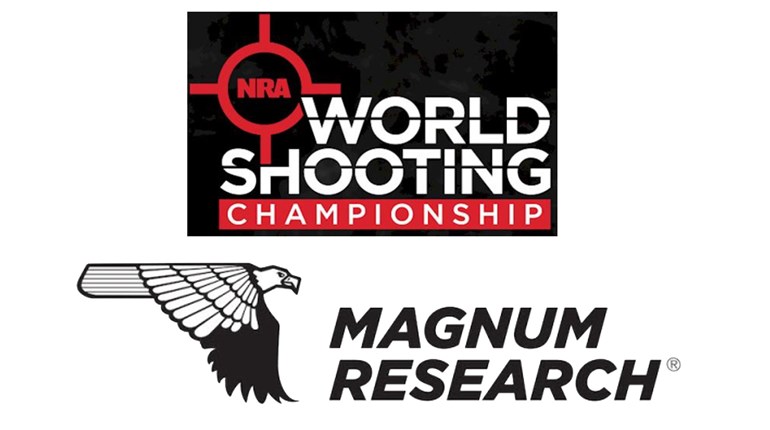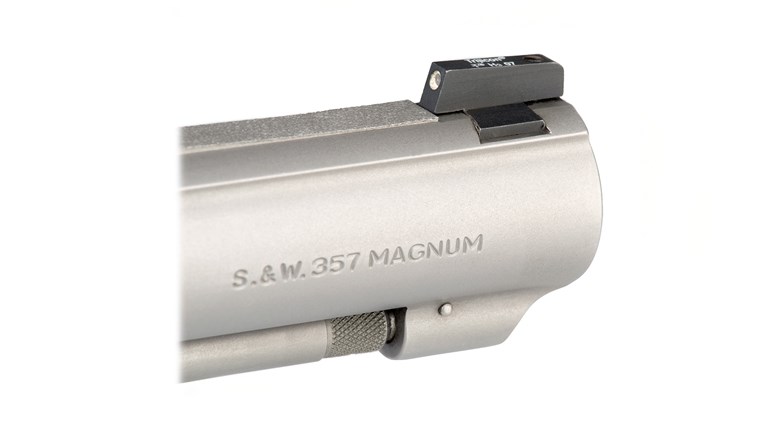
(above) Both Israeli- and U.S.-made Desert Eagles can share barrels, assuming that the proper bolt and magazines are used.
The Desert Eagle pistols have always intrigued me. Recently, through some horse trading, I became the proud owner of three of these pistols in three different calibers, .44 Mag., .440 Cor-Bon and .50 AE. The markings on the handguns reveal they were made by three different companies: Saco Defense, IMI and IWI. Except for the finish and the rib on top of the barrel, all three appear very similar. In addition, I got two extra barrels that were longer than the ones that came on the guns. I was told that I could switch the barrels from one frame to another but I’m a little skeptical since each one was made by a different company. Can you shed some light on the situation so I could be more comfortable with changing the barrels from one gun to another? Are there any other parts that need to be changed with the barrels, or should I just leave well enough alone?
J. Stone, Duck River, TN
The Desert Eagle pistol was designed in-house by the principles and some very astute employees of Magnum Research, founded in 1979. Several years later, in 1983, Israeli Military Industries (IMI) was contracted to build the pistols to very stringent quality standards, which allowed parts interchangeability between all of the guns. This was, of course, keeping in mind that bolts and magazines needed to correspond with the chambering of the barrel mounted on the frame. From 1995 to 1998 production of the Desert Eagle was moved to the U.S. to be manufactured by Saco Defense. The precision of the Saco Defense manufactured guns never quite made it to the level of IMI-marked models and production was moved back to Israel and IMI. In the 2005 time frame the Desert Eagle was produced under the Israeli Weapons Industries (IWI) name, which was the commercial manufacturing arm of Israeli Military Industries.
Today, the Desert Eagle pistols are manufactured by IWI and also in Minnesota at the Magnum Research factory. The quality is outstanding from both manufacturers and they share parts interchangeability from one to the other.
The barrels should interchange between the frames without a lot of trouble, although I have seen the Israeli-made barrels fit very tightly on the Saco Defense frames. If you find this the case with your guns, I would not force the issue or try to home-gunsmith the problem to make it fit. The customer service folks at Magnum Research are very good at taking care of this, should you find this to be the case.
Aside from the barrel, the bolts and magazines should correspond to the calibers and case-head sizes of the cartridges intended to be fired. The .357 Mag. and fairly rare .41 Mag. have bolts and magazines unique to themselves. The .44 Mag., .440 Cor-Bon and .50 AE all have the same cartridge-case-head dimensions, which allows them to use the same bolt.
However, the .44 Mag. cartridge itself requires its own magazine because of the case diameter. The .440 Cor-Bon and the .50 AE share the same parent case, which makes the .50 AE magazine compatible with both cartridges.
In general terms, the rails on top of the barrels of the Mk 1 models were nothing more than 3⁄8-inch wide straight rails that really served no purpose except perhaps for aesthetics. When the Mk VII was introduced, the rail was widened to 7⁄8 inch—similar to a Weaver or Picatinny rail, but with only two cross slots machined into the rail. With the advent of the Mk XIX the rail on top of the barrel came with multiple slots not unlike that of the military Picatinny rail.
The finishes on the Desert Eagle when first produced were 100-percent utilitarian, and they remained as such until the Kahr Firearms Group purchased Magnum Research in 2010. Since then the sky has been the limit regarding cosmetic finishes for the Desert Eagle pistol.
The amazing thing is, through all of these changes, the quality and parts interchangeability of the Desert Eagle has remained the same.




































